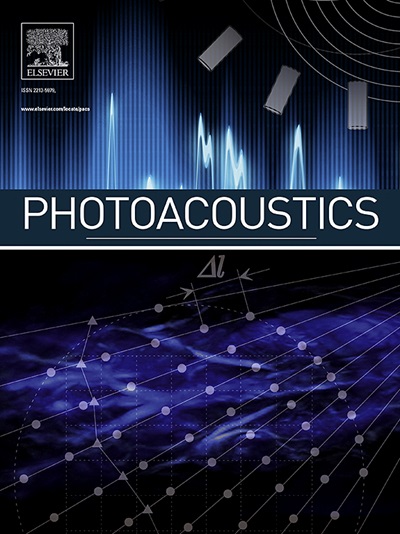Generative priors-constraint accelerated iterative reconstruction for extremely sparse photoacoustic tomography boosted by mean-reverting diffusion model: Towards 8 projections
IF 7.1
1区 医学
Q1 ENGINEERING, BIOMEDICAL
引用次数: 0
Abstract
As a novel non-invasive hybrid biomedical imaging technology, photoacoustic tomography combines the advantages of high contrast of optical imaging and high penetration of acoustic imaging. However, the conventional standard reconstruction methods under sparse view may lead to low-quality image in photoacoustic tomography. To address this problem, an advanced sparse reconstruction method for photoacoustic tomography based on the mean-reverting diffusion model is proposed. By modeling the degradation process from a high-quality image under full-view scanning (512 projections) to a sparse image with stable Gaussian noise (i.e., mean state), a mean-reverting diffusion model is trained to learn prior information of the data distribution. Then the learned prior information is employed to generate a high-quality image from the sparse image by iteratively sampling the noisy state. Blood vessels simulation data and the animal in vivo experimental data were used to evaluate the performance of the proposed method. The results demonstrate that the proposed method achieves higher-quality sparse reconstruction compared with conventional reconstruction methods and U-Net method. In addition, the proposed method dramatically speeds up the sparse reconstruction and achieves better reconstruction results for extremely sparse images compared with the method based on conventional diffusion model. The proposed method achieves an improvement of 0.52 (∼289 %) in structural similarity and 10.01 dB (∼59 %) in peak signal-to-noise ratio for extremely sparse projections (8 projections), compared with the conventional delay-and-sum method. This method is expected to shorten the acquisition time and reduce the cost of photoacoustic tomography, thus further expanding the range of applications.
求助全文
约1分钟内获得全文
求助全文
来源期刊

Photoacoustics
Physics and Astronomy-Atomic and Molecular Physics, and Optics
CiteScore
11.40
自引率
16.50%
发文量
96
审稿时长
53 days
期刊介绍:
The open access Photoacoustics journal (PACS) aims to publish original research and review contributions in the field of photoacoustics-optoacoustics-thermoacoustics. This field utilizes acoustical and ultrasonic phenomena excited by electromagnetic radiation for the detection, visualization, and characterization of various materials and biological tissues, including living organisms.
Recent advancements in laser technologies, ultrasound detection approaches, inverse theory, and fast reconstruction algorithms have greatly supported the rapid progress in this field. The unique contrast provided by molecular absorption in photoacoustic-optoacoustic-thermoacoustic methods has allowed for addressing unmet biological and medical needs such as pre-clinical research, clinical imaging of vasculature, tissue and disease physiology, drug efficacy, surgery guidance, and therapy monitoring.
Applications of this field encompass a wide range of medical imaging and sensing applications, including cancer, vascular diseases, brain neurophysiology, ophthalmology, and diabetes. Moreover, photoacoustics-optoacoustics-thermoacoustics is a multidisciplinary field, with contributions from chemistry and nanotechnology, where novel materials such as biodegradable nanoparticles, organic dyes, targeted agents, theranostic probes, and genetically expressed markers are being actively developed.
These advanced materials have significantly improved the signal-to-noise ratio and tissue contrast in photoacoustic methods.
 求助内容:
求助内容: 应助结果提醒方式:
应助结果提醒方式:


